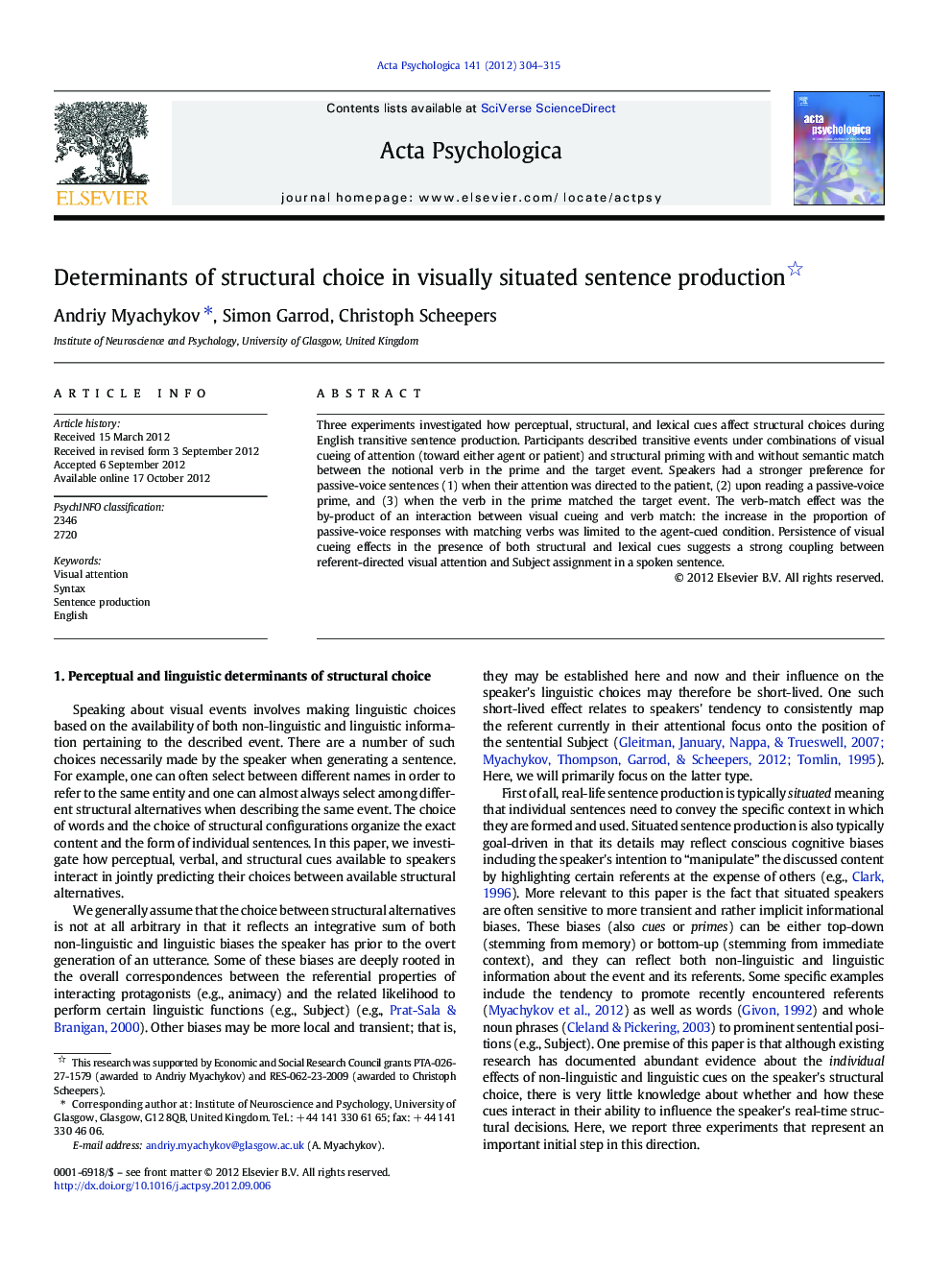| Article ID | Journal | Published Year | Pages | File Type |
|---|---|---|---|---|
| 919953 | Acta Psychologica | 2012 | 12 Pages |
Three experiments investigated how perceptual, structural, and lexical cues affect structural choices during English transitive sentence production. Participants described transitive events under combinations of visual cueing of attention (toward either agent or patient) and structural priming with and without semantic match between the notional verb in the prime and the target event. Speakers had a stronger preference for passive-voice sentences (1) when their attention was directed to the patient, (2) upon reading a passive-voice prime, and (3) when the verb in the prime matched the target event. The verb-match effect was the by-product of an interaction between visual cueing and verb match: the increase in the proportion of passive-voice responses with matching verbs was limited to the agent-cued condition. Persistence of visual cueing effects in the presence of both structural and lexical cues suggests a strong coupling between referent-directed visual attention and Subject assignment in a spoken sentence.
► We analyzed how attention and language interact during sentence production. ► Visual cueing of a referent affected structural choice. ► Matching verbs between primes and targets affected structural choice. ► The verb-match interacted with visual cueing. ► We propose a direct mapping mechanism from attention to language.
